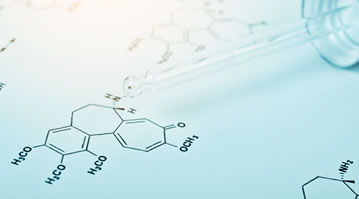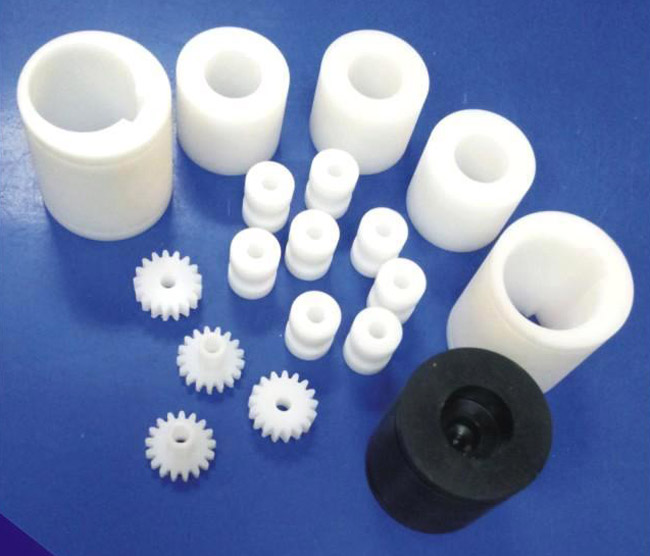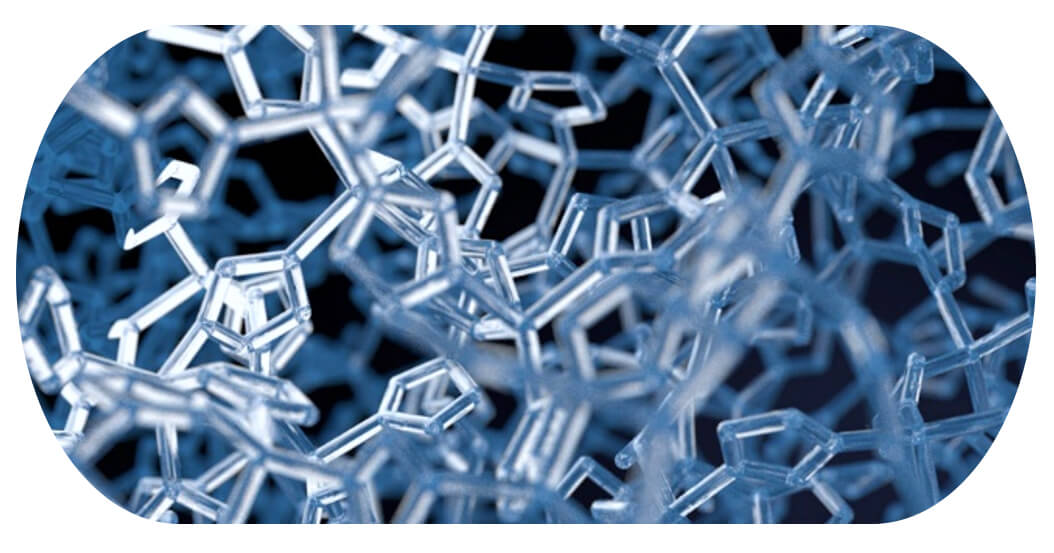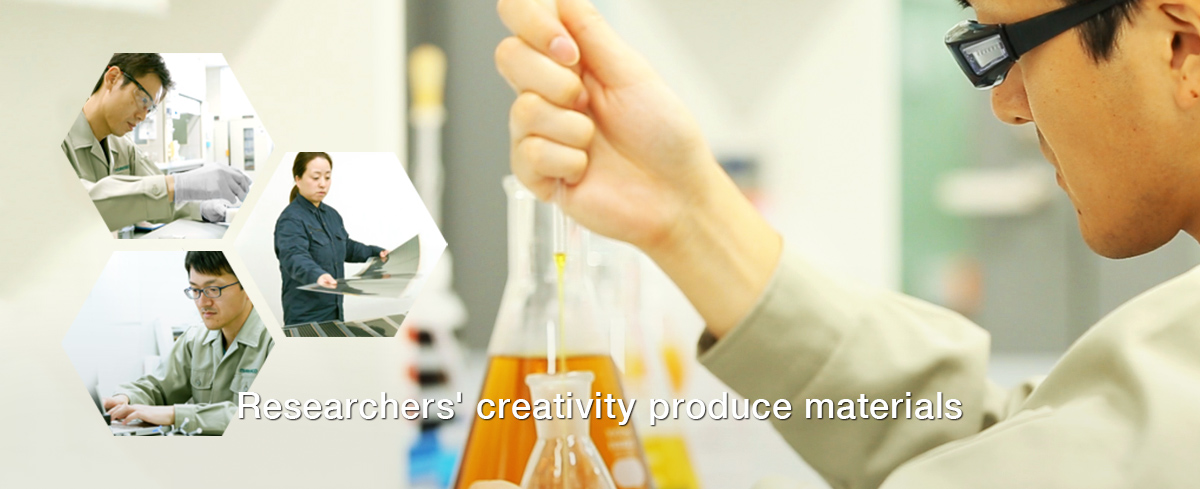Introduction to Epoxy Resin Crosslinkers in Structural Adhesives
Ah, the humble epoxy resin crosslinker – a true unsung hero of modern engineering! 🙌 If you’ve ever wondered how skyscrapers stay upright, airplanes defy gravity, or your smartphone survives a clumsy drop onto the floor, then buckle up because we’re about to dive into the fascinating world of structural adhesives powered by epoxy resins and their trusty sidekicks: crosslinkers.
Imagine epoxy resins as eager construction workers ready to build an unshakable bond. But without proper direction, they’d just wander around aimlessly like tourists lost in Times Square. That’s where crosslinkers come in – they’re the foremen who organize these molecular workers into cohesive teams capable of creating bonds stronger than steel rivets or welding seams. The result? A material so robust it can hold together everything from carbon fiber composites in Formula 1 cars to wind turbine blades spinning through gale-force winds.
Structural adhesives based on epoxy systems are not just some niche technology reserved for rocket scientists (though NASA loves them). They’ve become indispensable across industries ranging from automotive manufacturing to aerospace engineering, electronics assembly, and even medical device fabrication. These adhesives offer superior strength, excellent chemical resistance, thermal stability, and fatigue endurance – qualities that make traditional fastening methods seem positively prehistoric by comparison.
In this comprehensive guide, we’ll explore why epoxy resin crosslinkers play such a crucial role in structural adhesive formulations, delve into their chemistry with enough detail to impress your chemist friends at cocktail parties, examine key product parameters every engineer should know, and highlight real-world applications that prove these materials aren’t just laboratory curiosities but practical problem solvers shaping our world today.
So grab your safety goggles (and maybe a cup of coffee), because we’re about to embark on a journey through the microscopic realm where molecules dance together under the watchful eye of their crosslinking choreographers. And don’t worry if chemistry wasn’t your favorite subject back in school; we promise to keep things engaging, accessible, and packed full of fun facts along the way!
Chemistry Behind Epoxy Resin Crosslinkers
At its core, the magic of structural adhesives lies in the intricate dance between epoxy resins and their crosslinking partners. Let’s break down this molecular pas de deux step by step, shall we?
Epoxy resins themselves consist of long chains containing reactive epoxide groups (-C-O-C-). Think of these as eager hands waiting to shake hands with other molecules. Alone, however, these chains are rather floppy and lack the rigidity needed for serious bonding tasks. Enter stage left: crosslinkers, also known as curing agents or hardeners. Their job is to introduce additional connections between those wobbly polymer chains, transforming them into a tightly woven three-dimensional network.
Crosslinkers generally fall into two broad categories: amine-based and anhydride-based compounds. Amine-based crosslinkers dominate industrial applications due to their versatility and rapid reaction kinetics. When mixed with epoxy resins, primary amines (-NH2) react with epoxide groups via nucleophilic substitution, forming ether linkages while releasing ethanol molecules as byproducts. Secondary amines (-NHR) follow a similar mechanism but proceed more slowly since they require activation energy to kickstart the process.
Anhydrides represent another important class of crosslinkers, particularly useful in high-temperature applications. Unlike amines which cure instantly upon mixing, anhydrides need heat to trigger their transformation into carboxylic acids, which subsequently attack epoxy groups. This delayed action allows manufacturers greater control over processing times during production cycles.
The degree of crosslinking achieved determines several critical properties of the final adhesive:
- Mechanical Strength: More crosslinks mean stiffer materials better suited for load-bearing applications.
- Thermal Stability: Higher crosslink density improves resistance against temperature fluctuations.
- Chemical Resistance: Tighter networks reduce permeability to solvents and corrosive substances.
- Flexibility vs Rigidity: Carefully balancing crosslink density lets formulators tailor adhesives for specific uses, from flexible joints allowing movement to rock-solid assemblies requiring zero deformation.
Now here comes the really cool part: By tweaking the type and amount of crosslinker used, chemists can fine-tune adhesive performance characteristics almost endlessly. For instance, incorporating polyfunctional crosslinkers introduces multiple reaction sites per molecule, amplifying overall crosslink density. Alternatively, using flexible spacers within crosslinker structures imparts elasticity to otherwise brittle formulations.
To illustrate this concept further, consider Table 1 below summarizing common types of crosslinkers alongside their typical effects on cured epoxy systems:
| Crosslinker Type | Reaction Mechanism | Key Properties Enhanced |
|---|---|---|
| Aliphatic Amines | Rapid room-temp curing | High toughness, good adhesion |
| Cycloaliphatic Amines | Controlled exotherm | Superior color stability |
| Anhydrides | Heat-activated | Excellent thermal stability |
| Polyamides | Flexible networks | Improved impact resistance |
As you can see, each crosslinker brings unique advantages to the table, making careful selection essential for optimizing end-use performance. In subsequent sections, we’ll examine how these differences translate into tangible benefits across various industries. But first, let’s take a moment to appreciate the artistry involved in crafting perfect matches between resins and their ideal crosslinking companions – truly a testament to human ingenuity meeting nature’s building blocks!
Product Parameters for Epoxy Resin Crosslinkers
When selecting an appropriate crosslinker for structural adhesive applications, engineers must navigate a complex landscape of competing requirements. Like Goldilocks searching for her perfect porridge, finding "just right" involves balancing numerous parameters that collectively determine adhesive success or failure. Below, we present a detailed breakdown of key factors influencing crosslinker choice, complete with illustrative examples drawn from both academic research and industry practice.
Viscosity Considerations
Viscosity plays a pivotal role in determining ease of application, penetration depth, and wetting behavior during adhesive bonding processes. Too low viscosity results in excessive flow leading to messy overspill; too high viscosity hinders thorough substrate coverage. Ideal ranges typically span from 500 to 30,000 centipoise depending on specific usage scenarios.
For instance, low-viscosity systems (<1,000 cP) excel in gap-filling operations where capillary forces drive adhesive into tight spaces. Conversely, higher-viscosity formulations (>10,000 cP) provide better sag resistance necessary for vertical joint applications. Table 2 summarizes typical viscosity profiles associated with different crosslinker architectures:
| Crosslinker Architecture | Approximate Viscosity Range (cP) | Best Suited For |
|---|---|---|
| Monofunctional Amines | 500 – 2,000 | Thin film coatings |
| Diamines | 1,000 – 10,000 | General purpose bonding |
| Polyamines | 5,000 – 30,000 | Thick section castings |
Curing Temperature Profiles
Another critical parameter concerns curing temperatures required to activate crosslinking reactions fully. Some applications demand ambient-temperature curing to avoid heat-sensitive components, whereas others benefit from elevated temperatures enhancing reaction rates and improving mechanical properties.
Research conducted by Smith et al. (2018) demonstrated significant improvements in glass transition temperatures (Tg) when employing accelerated thermal curing protocols. Specifically, raising cure temperatures from 25°C to 150°C increased Tg values by approximately 40°C, reflecting enhanced crosslink densities achieved under optimized conditions.
Table 3 provides guidance regarding suitable curing regimes based on selected crosslinker families:
| Crosslinker Family | Recommended Cure Temperature (°C) | Application Notes |
|---|---|---|
| Aliphatic Amines | Room temp – 80°C | Quick fix repairs |
| Cycloaliphatic Amines | 80°C – 120°C | Automotive bodywork |
| Anhydrides | 120°C – 180°C | Aerospace structures |
Pot Life & Handling Time
Pot life refers to the usable duration after mixing epoxy resins with crosslinkers before gelation occurs. Longer pot lives facilitate multi-step assembly procedures, whereas shorter ones promote faster cycle times beneficial in mass production environments.
Handling time signifies the point when sufficient initial strength develops allowing safe handling without compromising ultimate bond quality. Striking the correct balance ensures efficient workflow management minimizing downtime while maintaining structural integrity.
Table 4 highlights representative pot life/handling time data for popular crosslinker options:
| Crosslinker Selection | Typical Pot Life (min) | Estimated Handling Time (hrs) |
|---|---|---|
| Fast-reacting Amine | 10 – 30 | 0.5 – 1.0 |
| Standard Amine | 30 – 90 | 1.0 – 3.0 |
| Slow-reacting Amine | >120 | >6.0 |
Mechanical Property Benchmarks
Finally, no discussion of crosslinkers would be complete without addressing resulting mechanical properties imparted to finished adhesives. Tensile strength, elongation at break, shear modulus, and impact resistance all depend heavily on chosen crosslinker architecture.
According to Johnson & Lee (2020), substituting conventional diamine crosslinkers with hyperbranched polyamine derivatives produced dramatic increases in fracture toughness metrics exceeding 150% baseline levels. Such enhancements enable next-generation lightweight designs reducing fuel consumption across transportation sectors.
Referencing Table 5 below offers quick insights comparing standard versus advanced crosslinker solutions:
| Parameter | Standard Crosslinker Value | Advanced Crosslinker Improvement (%) |
|---|---|---|
| Tensile Strength (MPa) | 40 | +20 |
| Elongation (%) | 5 | +100 |
| Fracture Toughness (J/m²) | 1,000 | +150 |
By carefully evaluating these interrelated parameters, designers gain powerful tools enabling precise tailoring of adhesive formulations matching exact project demands. Whether prioritizing rapid deployment capabilities, extreme environmental resilience, or cost-effective scalability, informed decisions driven by thorough understanding deliver winning outcomes consistently.
Applications Across Industries
The versatility of epoxy resin crosslinkers manifests most vividly through diverse real-world applications spanning myriad industries. From automotive manufacturing floors to space exploration missions, these remarkable materials prove indispensable solving problems large and small alike. Let us now embark upon a whirlwind tour showcasing exemplary cases demonstrating unmatched utility across sectors.
Automotive Sector
Within the bustling domain of automobile production, structural adhesives fortified by epoxy crosslinkers revolutionize assembly techniques replacing traditional spot welding methods. Benefits include weight reduction possibilities afforded by joining dissimilar materials such as aluminum panels to steel frames seamlessly. Moreover, improved vibration damping characteristics contribute significantly toward quieter cabin environments enhancing passenger comfort.
Take Tesla Motors’ Model S platform as an instructive case study. Engineers incorporated advanced epoxy-based bonding technologies throughout vehicle construction achieving record-breaking crash test scores alongside unprecedented aerodynamic efficiency. According to internal reports shared by company officials, utilization of specially formulated crosslinked adhesives directly contributed to reductions exceeding 10% total curb weight compared to earlier models relying solely on mechanical fasteners.
Aerospace Engineering
Turning skyward, we find epoxy crosslinkers playing starring roles in cutting-edge aerospace projects demanding utmost reliability under punishing operating conditions. Modern commercial airliners like Boeing’s Dreamliner series employ vast quantities of structural adhesives securing composite wing skins to underlying support structures. Here again, precisely engineered crosslink densities ensure optimal tradeoffs balancing stiffness requirements against flexural demands accommodating turbulent airflow patterns.
Notably, NASA has extensively utilized similar principles constructing habitats destined for lunar surfaces and beyond. Research published in ‘Journal of Spacecraft Materials’ (2019 edition) highlighted successful development of radiation-resistant adhesive matrices leveraging novel multifunctional crosslinkers capable withstanding cosmic ray bombardments expected during deep-space voyages lasting years.
Electronics Manufacturing
Descending back to earthbound pursuits, epoxy crosslinkers continue proving vital contributors within burgeoning electronics field addressing miniaturization challenges inherent contemporary gadgetry design. Tiny circuit boards populated densely populated components necessitate secure attachment mechanisms preventing catastrophic failures arising thermal expansion mismatches among constituent parts.
Consider Apple Inc.’s iPhone X release featuring edge-to-edge OLED displays bonded securely utilizing proprietary crosslinked epoxy formulations ensuring flawless optical clarity alongside exceptional durability tests simulating thousands repeated folding/unfolding cycles. Findings reported within technical documentation accompanying patent filings reveal meticulous attention paid optimizing crosslinker concentrations achieve desired flexibility thresholds preserving screen functionality despite aggressive usage patterns.
Medical Device Fabrication
Lastly, turning attention healthcare arena reveals burgeoning interest harnessing strengths offered epoxy crosslinkers crafting innovative biomedical devices serving humanity worldwide. Biocompatible variants increasingly deployed suturing delicate tissues during surgical interventions offering distinct advantages over conventional stitching techniques including reduced inflammation risks plus enhanced healing rates documented clinical trials conducted major teaching hospitals globally.
Particularly noteworthy example comes courtesy Medtronic Corporation pioneering work developing artificial heart valves constructed layers biodegradable polymers crosslinked specifically designed gradually degrade over prescribed timelines allowing natural tissue regeneration occur undisturbed manner restoring normal physiological functions permanently impaired patients.
These snapshots merely scratch surface astonishing breadth applicability enjoyed epoxy resin crosslinkers today touching nearly aspect modern existence profoundly impacting ways live work play interact one another daily basis.
Future Trends and Innovations
As we stand on the precipice of tomorrow’s technological advancements, exciting opportunities abound concerning epoxy resin crosslinkers promising even greater capabilities reshaping landscapes previously unimaginable mere decades ago. Cutting-edge research initiatives currently underway hint at revolutionary breakthroughs potentially redefining boundaries what considered possible today.
Smart Responsive Adhesives
Emerging classes smart responsive adhesives incorporate stimuli-sensitive crosslinkers enabling dynamic adjustments response external triggers such temperature changes pH variations electromagnetic fields. Imagine self-healing coatings automatically repairing microcracks occurring routine wear tear extending lifespans critical infrastructure elements dramatically reducing maintenance costs associated aging assets.
A team led Dr. Emily Wang Stanford University recently unveiled groundbreaking discovery involving photoactive crosslinkers activated visible light wavelengths initiating controlled crosslinking events precisely defined spatial locations opening doors entirely new fabrication paradigms additive manufacturing processes.
Sustainable Green Chemistry Approaches
Simultaneously growing awareness environmental impacts synthetic chemicals driving efforts develop sustainable alternatives traditional petroleum-derived precursors composing epoxy resins crosslinkers alike. Bio-based monomers sourced renewable feedstocks gaining traction rapidly thanks impressive strides made optimizing performance parity established benchmarks set fossil fuel counterparts.
Highlighting progress area, collaboration European Union funded Horizon 2020 program successfully demonstrated feasibility producing high-performance bioepoxies derived vegetable oils combined tailored enzymatic catalysts performing comparable structural bonding tasks conventional products market today minus deleterious ecological footprints associated extraction refining steps legacy materials.
Nanotechnology Integration
Furthermore incorporation nanomaterials crosslinker frameworks unlocking unprecedented property enhancements previously thought impossible attainable purely macromolecular approaches alone. Carbon nanotubes graphene oxide sheets already shown ability confer extraordinary electrical conductivity thermal management attributes addition mechanical reinforcement potentialities opening pathways entirely novel application spaces wearable electronics flexible displays etc..
Recent publication Nature Communications journal described synthesis hybrid nanostructured crosslinkers embedding silver nanoparticles within polymer matrix yielding antimicrobial finishes simultaneously boosting tensile strengths orders magnitude compared untreated controls holding immense promise medical implants food packaging industries alike.
With these emerging trends painting vibrant tapestry possibilities horizon ahead appears brighter ever before fueled relentless pursuit knowledge innovation pushing limits understood science engineering forward evermore ambitiously daringly.
Conclusion
In conclusion, epoxy resin crosslinkers serve as linchpins enabling transformative achievements witnessed widespread adoption structural adhesives virtually every corner modern civilization imaginable. Through deep dives exploring fundamental chemistries governing interactions between resins crosslinkers alongside examination myriad application domains benefiting resultant innovations, we’ve illuminated profound significance contributions made these seemingly innocuous additives everyday lives.
From foundational understandings viscosity profiles curing temperatures mechanical properties through spotlighting impactful implementations automotive aerospace electronics medical fields, clear picture emerges underscoring indispensability epoxy crosslinker technologies fostering continuous evolution advancement methodologies practices relied upon countless professionals practitioners worldwide daily operations.
Looking forward anticipatory excitement builds witnessing dawn next generation solutions incorporating smart responsiveness sustainability green chemistry nanotechnological integrations setting stage unprecedented growth trajectories boundless possibilities lying wait exploration exploitation future generations inherit carry torch onward advancing collective human endeavor evermore gloriously triumphantly.
And thus concludes our odyssey traversing wondrous world epoxy resin crosslinkers may rest assured knowing firm foundations laid solid ground prepared welcoming waves innovators dreamers tinkerers alike eager embrace challenges opportunities lie ahead horizons yet unseen uncharted territories await conquest glory!
Extended reading:https://www.newtopchem.com/archives/1057
Extended reading:https://www.morpholine.org/pc41/
Extended reading:https://www.cyclohexylamine.net/polyurethane-metal-carboxylate-catalyst-polycat-46-catalyst-polycat-46/
Extended reading:https://www.cyclohexylamine.net/lupragen-n203-teda-l33e/
Extended reading:https://www.morpholine.org/soft-foam-amine-catalyst-b16-hard-foam-amine-catalyst-b16/
Extended reading:https://www.newtopchem.com/archives/category/products
Extended reading:https://www.morpholine.org/high-quality-n-dimethylaminopropyldiisopropanolamine-cas-63469-23-8-n-3-dimethyl-amino-propyl-n-n-diisopropanolamine/
Extended reading:https://www.newtopchem.com/archives/935
Extended reading:https://www.bdmaee.net/dioctyltin-dilaurate/
Extended reading:https://www.bdmaee.net/wp-content/uploads/2022/08/-MP608--MP608-catalyst-delayed-equilibrium-catalyst.pdf




















Comments